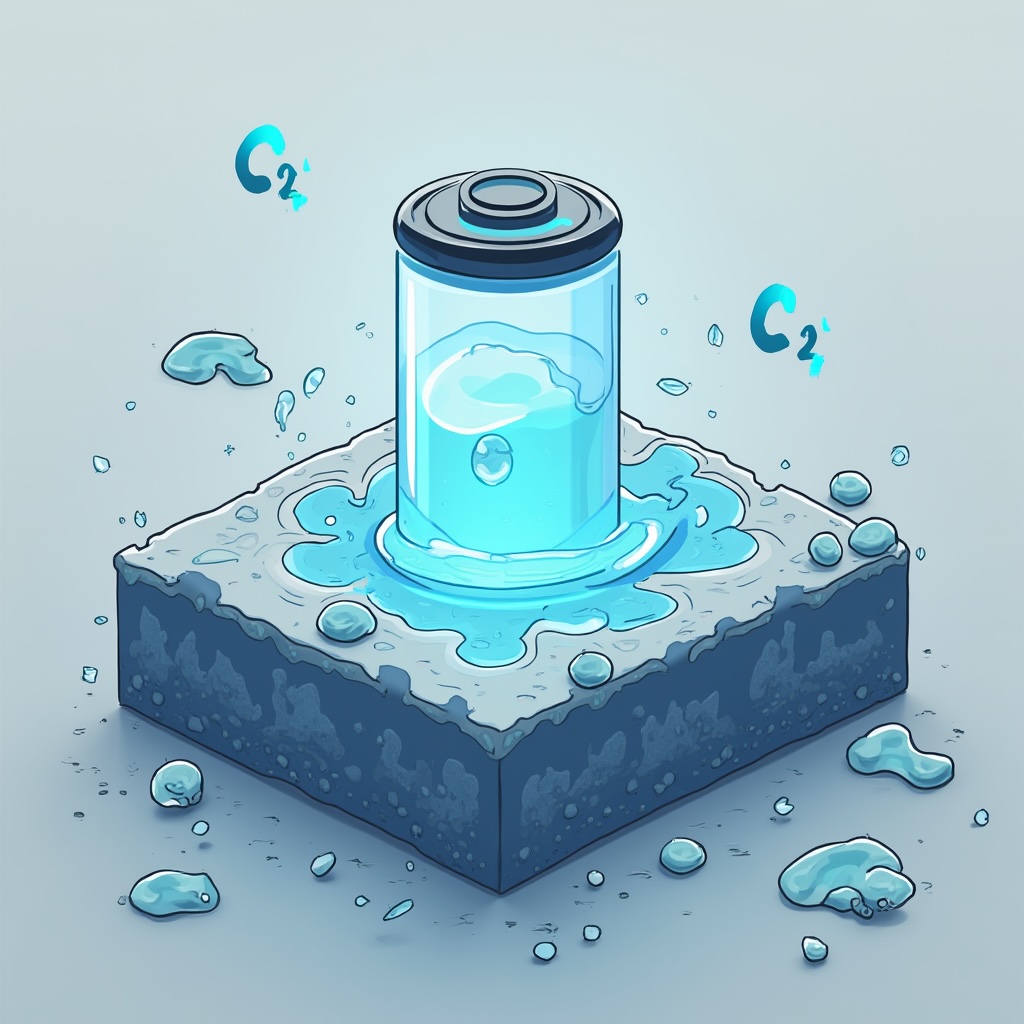
This research presents a high-performance, ultrafast rechargeable aluminum-chlorine battery using a molten salt electrolyte and nitrogen-doped porous carbon cathode, achieving over 3000 stable cycles and fast chlorine conversion for next-generation energy storage.
💡 Imagine a battery that charges in a flash, lasts thousands of cycles, and skips the rare and expensive metals like lithium. Sounds like science fiction, right? Well, scientists just made it science fact! In a groundbreaking study, researchers introduced a new type of aluminum-chlorine (Al-Cl₂) battery that could seriously shake up the future of energy storage. Let’s dive into how this cool tech works and why it matters.
Modern batteries—especially lithium-ion—are great but come with baggage:
⚠️ Expensive materials
🧯 Safety issues
🌍 Resource limitations
So, scientists are exploring alternatives. One exciting candidate is aluminum, which is:
🌎 Abundant (8.2% of Earth’s crust)
🧲 High in capacity (8040 mAh/cm³)
🔐 Safer than lithium
Even better, chlorine—yes, the same stuff used in pools!—can serve as a powerful cathode material. When combined with aluminum and used in a special type of molten salt electrolyte, it leads to a fast, efficient, and long-lasting battery. 🚀
Here’s where things get spicy 🔥—the battery uses a molten salt mixture (including AlCl₃, NaCl, KCl, and LiCl) as the electrolyte, operating at 120 °C.
🔁 Inside the battery:
This unique chemistry avoids the sluggish, messy solid-gas reactions seen in older batteries and instead promotes fast, reversible, and efficient energy transfer. ✨
The battery’s performance really shines thanks to the clever design of the cathode:
This structure:
🧲 Holds on to chlorine gas better
♻️ Makes the redox reaction reversible
⚡ Improves efficiency and cycle life
🏁 Result: A battery with minimal energy loss, high stability, and low voltage drop!
Let’s get geeky with the specs 📊:
💪 That's high performance on par with or better than many lithium-based batteries—without the lithium!
One big danger in batteries is dendrite formation—those pesky metal spikes that cause short circuits 😨. To prevent this:
As a result:
Scientists used DFT simulations, AIMD models, XPS, and GC-MS to really understand the battery in action. They confirmed:
By focusing on solution-phase (not solid-gas) chlorine chemistry, they avoided sluggish reactions and improved performance significantly.
This new battery tech isn’t just lab magic—it’s highly practical and scalable. Here’s why it’s promising:
This aluminum-chlorine battery offers a unique combination of:
💥 Ultrafast charging
🔄 Long cycle life
🌍 Earth-friendly materials
🧪 Smart chemical engineering
It’s still early days, but the results are electrifying 🔋⚡. As we move toward a renewable-powered world, innovations like this could power the grids—and gadgets—of tomorrow.
✨ Stay tuned to EngiSphere for more brilliant breakthroughs from the engineering frontier. We break down the toughest science, one emoji at a time! 😄🔧
🔋 Battery - A device that stores energy and releases it as electricity when needed—like the power source for your phone or car. - More about this concept in the article "🔋 Smart EVs: How AI is Revolutionizing Battery Management".
⚙️ Anode - The “negative” side of a battery where electrons leave during discharge.
⚡ Cathode - The “positive” side of a battery where electrons enter during discharge. - More about this concept in the article "Powering a Sustainable Future: The Rise of Lithium Iron Phosphate Batteries 🔋".
🧂 Electrolyte - The goo or liquid between the battery’s two ends that helps ions move back and forth. - More about this concept in the article "Organic Electrochemical Transistor Biosensors: The Future of Biomedical Sensing 🧪🔬🧬".
🌡️ Molten Salt - A type of salt that’s melted into a liquid at high temperatures—used here as a super-conductive battery electrolyte.
🧪 Redox Reaction - A chemical reaction where something gains electrons (reduction) and something else loses them (oxidation)—it’s what makes batteries work!
🔁 Coulombic Efficiency - A measure of how well a battery charges and discharges—higher is better (close to 100% means very little energy is wasted).
🌬️ Chlorine Gas (Cl₂) - A yellow-green gas used in this battery as a high-energy cathode material—it’s reactive and powerful!
🔍 Nitrogen-Doped Carbon (NPC) - Carbon material enhanced with nitrogen atoms, giving it special powers like better gas adsorption and faster reactions.
💥 Dendrites - Spiky metal crystals that grow on battery anodes and can short-circuit the battery—definitely not something you want.
🧵 Carbon Fiber Membrane (CFM) - A fine, web-like material that coats the battery anode to prevent dendrites and keep charging smooth.
🧠 DFT (Density Functional Theory) - A fancy computer simulation method used to predict how atoms and electrons behave inside materials.
Source: Huang, J.; Xu, L.; Wang, Y.; Wu, X.; Zhang, M.; Zhang, H.; Tong, X.; Guo, C.; Han, K.; Li, J.; et al. Ultrafast Rechargeable Aluminum-Chlorine Batteries Enabled by a Confined Chlorine Conversion Chemistry in Molten Salts. Materials 2025, 18, 1868. https://doi.org/10.3390/ma18081868
From: Wuhan University of Technology; Liaoning Academy of Materials; Zhengzhou University; Zhongyu Feima New Material Technology Innovation Center (Zhengzhou) Co., Ltd.